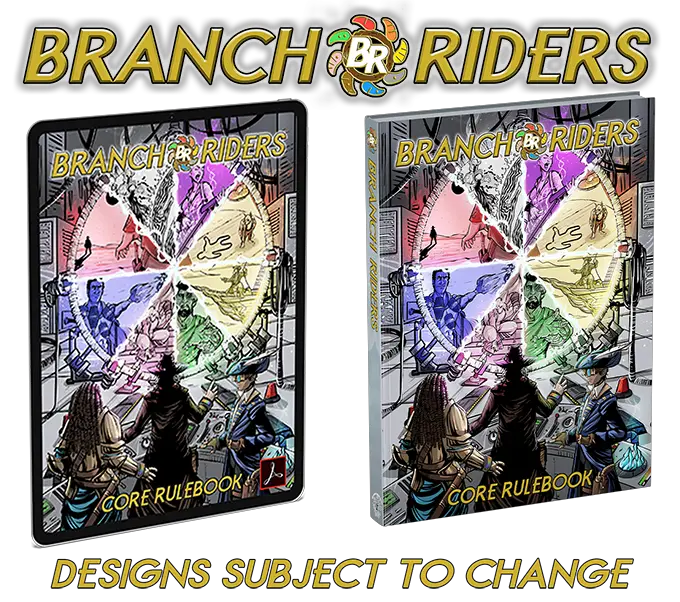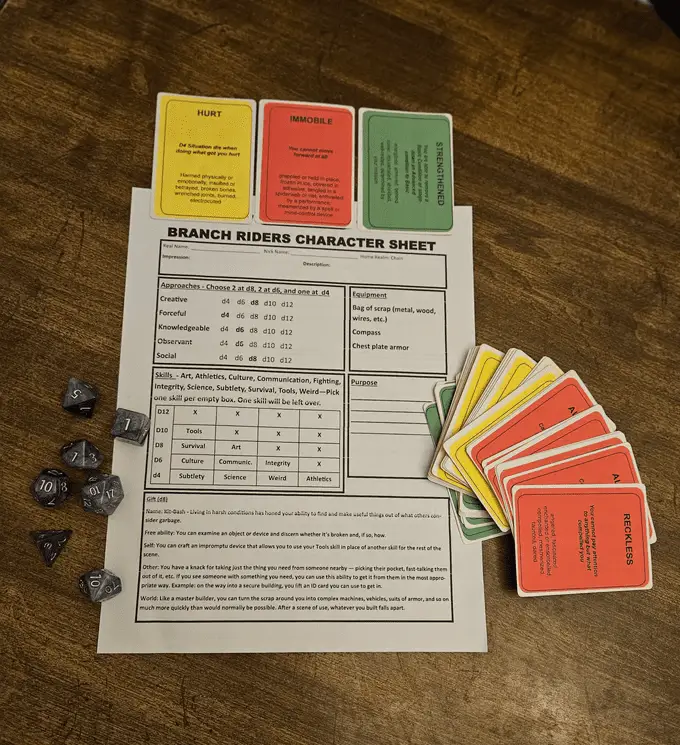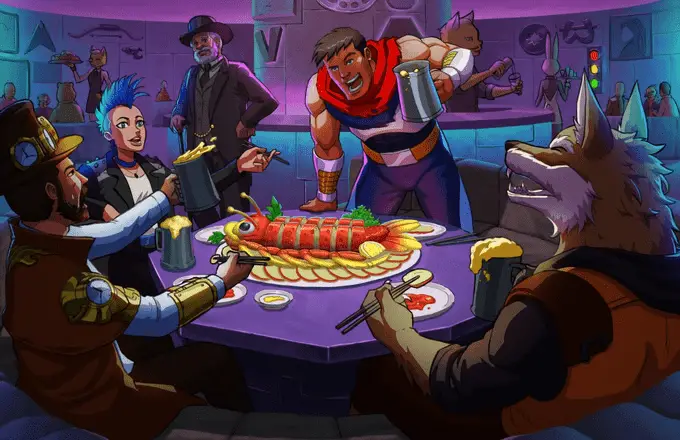While the multiverse is a premise that’s oversaturated in film and television, it’s still a promising prospect for telling meaningful and interesting stories. That’s why one group has decided to create a new TTRPG setting that offers simple rules but also provides meaningful opportunities to engage with social and personal issues through gameplay.
Branch Riders is a new narrative-driven TTRPG on Kickstarter published in partnership with Onyx Path Publishing. The book is penned by the Bodhana Group, a nonprofit organization based out of Pennsylvania that “advocates the use of tabletop gaming as a directed therapeutic and clinical practice that can benefit personal growth as well as enhance social and educational services to individuals and families.” The game launched on June 11 and is available for backing now, with a campaign running through July 11.
But what is Branch Riders?
Branch Riders Lore

The Branch Riders is a group of special forces who are protecting the residents of eight realms from the corruption of the Blight, a malevolent impersonal force out to make a mess of the universe. Riders will be asked to deal with the Blight’s detrimental effects on the realms through a number of methods. Violence is certainly an option, but so is covert action, creative expression, social interaction and a number of other tools in the Rider’s arsenal. Riders are also provided “gifts”, talents that offer them unique abilities that will help them seek success.
The eight realms each offer thematic settings that offer various creative options for character creation. One realm is focused on the conflict between a national corporation known as CNTRL pushing down emotions while a group of “punk wizards” try to push back on the group with emotions and magic. Another realm features a series of humans who were mutated and given animal body parts and who have to survive in a Wasteland. The game offers a number of themes and story settings that a DM could build a few sessions or even an entire campaign around if they wanted. It also offers players a number of character options. Maybe they’re a cowboy, or maybe they’re a superhero.

One of Branch Riders‘ standout features is its unique approach to dice. Unlike traditional RPGs, players always roll three dice, but the type of dice is dependent on several different variables, adding a layer of simplicity to the game. The dice include:
- An Approach Die, which will change depending on how skilled a player is with a particular approach to a problem. For example, a player who is built more for combat may roll a D10 when using a Forceful approach to scare someone into sharing secrets, but a D6 when attempting a Social approach to do that same thing.
- A Skill or Gift Die will change in size depending on the player’s skills. These include things like athletics, science, and subtlety. There are also gifts, which are the special abilities a player may have based on their realm of origin. The gifts can have various effects depending on how they use the powers.
- Finally is the Complication Die, a metric based on the Blight Exposure meter, The meter tracks how “aware” the Blight is of the Branch Riders in the story. The more aware the Blight is, the smaller the dice become. This is a metric that is visible to all players at the table and will shift depending on how successful or unsuccessful a player is at staying covert or using their ‘gifts’.
Players must roll a 4 or more to get a success. The number of successes will determine how successful the player will be at whatever task they attempt.

By using dice-type to determine a player’s level of skill, Branch Riders strips the game of the dreaded math or crunchiness that many RPGs have; a common approach from newer games these days that shift away from the more calculative methodology of Call of Cthulhu and Dungeons and Dragons. The game also takes away the risk putting players at risk of death by using Conditions to limit them as a consequence for failure. The only time a player may experience failure is if the Blight Exposure meter reaches its max number, which may force the players to face growing danger or have to decide to retreat.
While Branch Riders can be played by anyone for fun, the game’s design is centered around Bodhana Group’s notion of “therapeutic gaming,” where TTRPGs are used as tools to help teenagers or adults going through therapy. The practice is not new, and is regularly used around the United States as a tool to help younger men and women. What Branch Riders is attempt to minimize the mechanical complications in hopes of emphasizing the social and emotional benefits that the game can provide.

“The settings and mechanics [of Branch Riders] have rich possibilities for therapists and people using RPGs for intentional goal work,” Jack Berkenstock Jr, executive director of the Bodhana Group, told The Fandomentals. “Our genre settings of the realms have been combined with skill building concepts like resiliency, social capacities and critical thinking. This way its easier to create worlds that capture the opportunity for injecting clinical goals into the game they are running.” These goals could include learning empathy, improving decision-making skills or a number of other social practices that people engage on the daily.
The game isn’t meant to be a replacement for therapy, however. Roleplaying games are “the vehicle, not the destination,” Berkenstock emphasized. It is meant to be used in tandem with other methods for personal growth.
Branch Riders presents a thoughtful and provocative approach to RPGs that mixes therapeutic tools with a number of potential settings that parents, communities and therapists can use to expose players to meaningful lessons involving social skills
The Kickstarter for Branch Riders runs through July 11, and you can back it here.
Images via Bodhana Group
Have strong thoughts about this piece you need to share? Or maybe there’s something else on your mind you’re wanting to talk about with fellow Fandomentals? Head on over to our Community server to join in the conversation!


